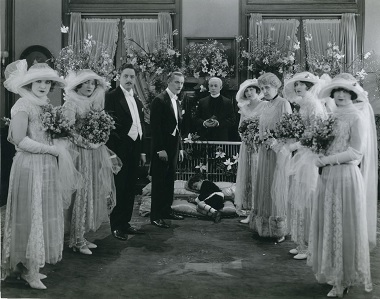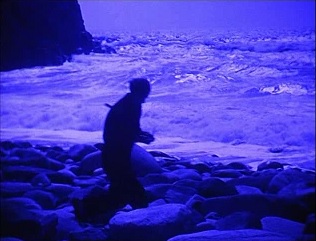
The films of John M. Stahl were spot-lit at last year's Pordenone Silent Film Festival, an edifying survey of the early works of a director I knew mainly from his Sirk premakes and 1945's Leave Her to Heaven. Of his domestic melodramas, I was riveted by the lurid, gobsmacking The Child Thou Gavest Me and the sublime, heartrending The Song of Life, and not just because too-cute child actor Richard Headrick graces the screen in both. They demonstrate starkly how marital issues were treated by male and female writing teams, respectively.
 |
I don't remember much of the visual qualities of the Library of Congress print, other than that it adequately rendered the chiaroscuro effect on which a pivotal scene depends.
The Home Maker was directed by King Baggot, but with its "progressive" portrayal of gender roles in a marriage it could be mistaken for a Stahl picture. While necessity brings about the role reversal, the subsequent prosperity of the family and its members argues for its virtue. The film goes so far as to suggest that this novel arrangement could be legitimately chosen! Like any subversive commercial film, The Home Maker tries to have things both ways, but we can glean its true sympathies.
The film survived as a 16mm copy for home viewing, Universal having destroyed most of its silent holdings at the end of that era. The 35mm print from UCLA is preserved from this copy.
Marcel L'Herbier's L'Homme du large was the standout at Pordenone, with its location photography on rocky, wave-spattered shores, its expressionist lyricism, and its elemental narrative. The version of the film we have now is a bit of an anachronistic pastiche. The coloring scheme is unlike anything I've seen in the film's contemporaries, and the title cards, which look like something out of Moroder's Metropolis and are peppered, I'm told, with French idioms from the 1980's, are certainly a later imposition.
 |